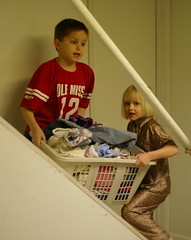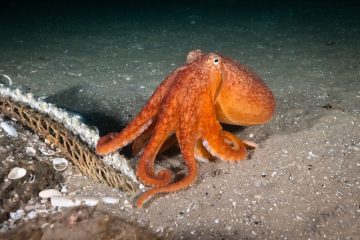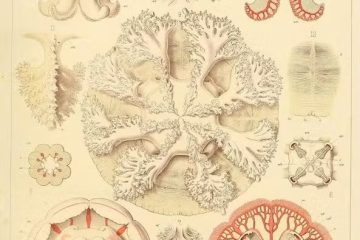It’s the Genes! It’s the Hair! It’s “Cooperativity”: An Evolutionary Account of Populism
By Marcia Pally

It’s a virus, a friend of mine said about the far-right wins in the May elections for the European Parliament. A 31 percent vote for Nigel Farage’s anti-EU party! The anti-EU rightist Marine Le Pen won over French President Emmanuel Macron!! Matteo Salvini won big in Italy!!! Far-right parties grow where they had already grown (Poland, Hungary)!!!! Not to mention Trump, whose popularity on the other side of the Atlantic holds steady ¡ ¡ ¡ ¡ ¡.
We are forgetting the lessons of the twentieth century, my friend said. White Christian men are the victims! Guiltlessness—it’s a virus.
For a while, I thought it’s the hair. Picture Trump’s blond simulacrum of cotton candy. Now picture the Brexiteer Boris Johnson’s. Add the Dutch rightist Geert Wilders. And Kim Jong Un’s coif, dyed flaxen… Maybe something is dripping down from inflated hair and inflating brains.
My friend insisted: it’s a bug.
Perhaps. But one thing it’s not is genes. We don’t have “selfish” genes, populist or even “us-them” genes. It’s not genetic for Italians to be suspect in Germany and Africans to be suspect in Italy, or for Brits to be wary of Poles and Poles to be wary of, well, non-Poles.
To begin with, we are not determined by genes. Whatever we become, neurobiologist Darcia Narvaez explains, “is a co-construction of genes, gene expression from environmental effects … and the ecological and cultural surroundings” (p. 15, 103). Our genes develop into specific characteristics depending on the internal chemistry of the body, which is influenced by nutrition, health, and the emotions that are reinforced in interactions with others and the environment. Frequent fear, stress, and anger create chemical washes and facilitated neuro-pathways different from those stimulated by joy and safety. Pathways that occur frequently get habituated, so to speak, so they develop something like an early-boarding advantage and get going more quickly, beating out other possible responses. In short, a child frequently stressed and angered learns to respond to the world in anger.
The interactions that affect our neurochemistry are in turn affected by class, education, employment, subjection to pollution or violence and by the class, education, etc. of those we interact with, beginning with near-by relationships and extending out through global connectedness.
So genes and what affects their contribution to who we are depends on everything else that affects who we are. What we do have, however, that pertains to the “us-them” worldview is oxytocin (in men and women) and vasopressin (in men). These peptide hormones stimulate caring behavior towards others but in doing so, increase aggression against those who endanger the people we care for.
Sounds like a hormonal cocktail for us-them thinking. But before we rush from a genetic theory of us-them to a hormonal one, we should recall that becoming aggressive towards those who endanger “us” first requires a danger. So, it’s the context and interaction that count.
But why would we endanger each other? Evolutionary biology suggests that, in the nearly one million years of evolving from ancestral primates into homo sapiens, survival pressures selected for “cooperativity,” fairness, and sharing with others for the well-being of the group. This enabled better group protection, food gathering, and group care of offspring.
Cooperativity was likely higher within hunter-gatherer groups than among them, but its survival usefulness even between groups is seen in this example: If people from separate hunter-gatherer bands battle each other to be the ones to hunt an animal, the winner may end up with more food. But many will be killed in the battle, the capacity to overpower the animal will be diminished, and chances increase of becoming the animal’s meal rather than making it one’s own. Cooperation may be the better way to go.
Think about it: were humanity, through genes or hormones, “wired” for competition and violence rather than cooperativity, violence would feel not ghastly and tragic but comfortable.
Certain non-human primates are highly cooperative (bonobos) while others are less so (chimps). But whatever the us-them aggression levels of our last common ancestor (from whom we also inherit), cooperativity became evolutionarily critical for humans. Even the homo erectus evolved “an entirely new level of social organization beyond anything seen in nonhuman primates” (Religion in Human Evolution, Kindle Location 2019). Sociologist Robert Bellah (Chapters 2-5), primatologist Frans de Waal, and neuroscientist Donald Pfaff offer good overviews of this development, but you might want to check out “The Evolutionary Origins of Friendship,” “Evolutionary Foundations of Human Prosocial Sentiments,” “Is There a War Instinct?” (no, as it turns out), and for the litigious among us, “Reciprocal Altruism as the Basis for Contract.” Sarah Hrdy and Michael Tomasello give fine accounts of how the cognitive requirements that enable complex, sustained social projects emerged from the high incidence of interaction, mimicking, and mirroring between human infants and caretakers. Even in cognitive capacity, genes are not sufficient. High relationality is key.
In short, a million or so years of evolution yielded forms of hunter-gatherer living with substantial (though hardly perfect) cooperativity, where people were not foundationally aggressive and struggling to overcome “natural” violent impulses but were relatively cooperative. The default position was fairness in sharing though aggression could appear under certain conditions. We are, Pfaff writes, “wired for goodwill” (p. 5). Clare et al. add, “There is presently no conclusive evidence for intergroup fighting in the early Pre-Pottery Neolithic,” archaeologists and they warn against the “‘bellicosification’ of prehistory” (p. 110).
So how did us-them thinking get into the human repertoire? Farming and permanent settlement changed human culture. While hunter-gathering societies were based on communal property and a roughly equitable sharing of resources, with agriculture and sedentarism came population and property concentrations. That means inequitable resource distribution within groups, socio-political hierarchies, and the maintenance of inequality by force (from armed men to law), prodding have-nots also to wrest goods by force. It means neighboring groups that are unequal in wealth, incentivizing raiding, theft, and war. This is less likely among roving hunter-gatherer bands, where contact among groups was intermittent and bands were less frequently in resource competition as they moved around. Bellah concludes that “organized warfare oriented to territorial conquest does seem to appear only where rich economic resources are locally concentrated” (Kindle Location 3041-3043).
The bottom line is, since agriculture and property concentrations, we’ve been living in inequitable socio-economic arrangements for which we did not evolve. Schaik and Michel note that the last eight or nine thousand years, an evolutionary eye-blink, is hardly enough time for us to adapt our cooperativity to the “new,” propertied, hierarchical way of life. So it continues to violate our evolution-tested sense of fairness and cooperation.
No wonder people push back when unfairness increases. Precisely because we have evolved for fairness, when people feel unfair material hardship, the humiliation of hierarchies, and lost dignity, they protest. It’s the “us” who have been cheated against the “them” who are doing us harm. This doesn’t mean we always correctly identify the “them” and how they are harming “us.” These divisions depend on local culture more than economic data and they are highly changeable, psycho-neurobiologist Robert Sapolsky notes. But it does mean feelings of outrage at unfairness have evolution to back them up.
It’s not us-them genes that prods populism or neo-nationalism but violation of our cooperativity. We’ve set ourselves up in socio-economic systems that trounce what Narvaez calls our relational “baseline” (p. 438). And no good can come of that.
#
Professor Marcia Pally teaches at New York University and is a regular guest professor at the Theology Faculty of Humboldt University-Berlin. Her most recent book is Commonwealth and Covenant: Economics, Politics, and Theologies of Relationality, which was nominated for a Grawemeyer Award in Religion and selected by the United Nations Committee on Education for Justice for distribution worldwide. Mimesis and Sacrifice will be published in Oct. 2019 (Bloomsbury Academic) and The New Evangelicals was published in 2011. In addition, Prof. Pally has been a columnist and contributor to U.S. and European periodicals, including Religion and Ethics, Commonweal, The New York Times, The Guardian, Religion News Service, die Zeit, Süddeutsche Zeitung, and Tageszeitung, among other periodicals.
Counterpoint blogs may be reprinted with the following acknowledgement: “This article was published by Counterpoint Navigating Knowledge on 5 June 2019.”
The views and opinions expressed on this website, in its publications, and in comments made in response to the site and publications are those of the author(s) and do not necessarily reflect the views and opinions of Counterpoint: Navigating Knowledge, its founders, its staff, or any agent or institution affiliated with it, nor those of the institution(s) with which the author is affiliated. Counterpoint exists to promote vigorous debate within and across knowledge systems and therefore publishes a wide variety of views and opinions in the interests of open conversation and dialogue.




1 Comment
There’s Something Wrong With Iowa—Or With the Species? – Counterpoint: Navigating Knowledge · February 11, 2020 at 5:42 AM
[…] rural hunter-gatherer would have conceived of advancing only her own self-interest. As I noted in a previous post, H. sapiens for the last 200,000 years has been beset by “hypercooperativity,” as evolutionary […]